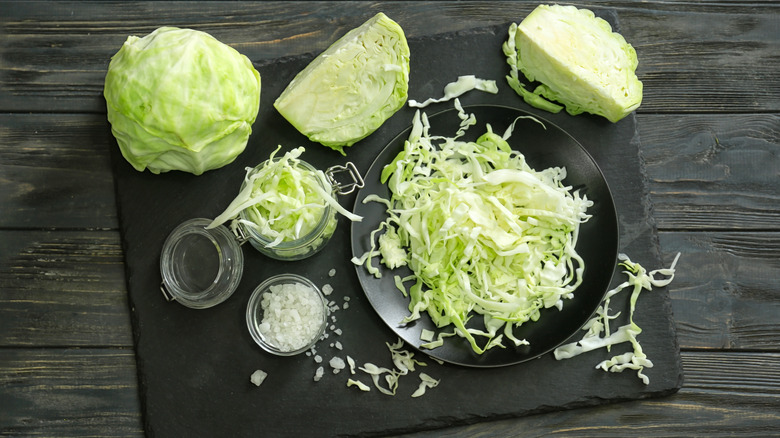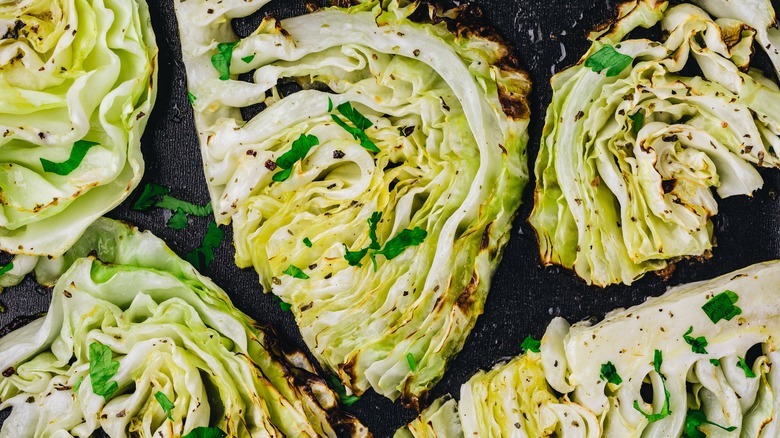What To Consider When Cooking Chopped Vs. Wedged Cabbage
When it comes to cooking cabbage, one of the first decisions you'll need to make is whether to chop or wedge it. Chopping cabbage involves cutting it into thin, evenly-sized pieces. This can be done by hand with a knife or a mandoline slicer for more precision. On the other hand, wedging cabbage calls for a few large cuts into wedge-shaped pieces. Both methods have advantages and disadvantages, and the right approach depends on the specific recipe and your preference.
But even before you start to cook your cabbage, there are differences in the way you clean each cut of cabbage. Chopped cabbage can be cleaned thoroughly in a bowl of cool water so that all of the dirt and bacteria can be rinsed off individual leaves. With wedged cabbage, it is a bit more challenging to get every crevice of the cabbage since the layers remain intact. However, you can clean your cabbage effectively by dunking the sliced wedges in water and even adding a splash of vinegar (per Colorado State University). When your cabbage is clean and prepped, you should consider the differences in cooking each cut of cabbage.
Time and heat
You may think that cabbage will always be a cabbage. Chop it or slice it, and you may believe that it'll probably cook the same. But that couldn't be further from the truth: Cutting vegetables affects how they taste. According to NPR, finely diced vegetables cook faster due to a larger exposed surface area. Not only does this change how long you should cook your chopped cabbage, but it also affects how malleable it is to sauces and fats, via NPR. Chopped cabbage cooks quickly and evenly, making it a good choice for stir-fries, slaws, and soups. You can think of how aromatics in a mirepoix react to heat: The finely chopped onions, carrots, and celery "sweat" and produce flavor for the base of a sauce, per MasterClass. In a short amount of time, finely chopped cabbage becomes more flavorful than wedged cabbage.
Wedged cabbage, given its size and its compact layers, takes a longer time to cook thoroughly. Of course, the exposed bias on which the cabbage is seared will brown as quickly as chopped cabbage, but the interior layers will take a bit longer to soften. Thus, to reduce the risk of burning one side while leaving the wedge raw and bitter, you should cook it slowly. Methods such as slow roasting or grilling are perfect for cooking cabbage wedges. So whether you are stir-frying chopped cabbage or searing wedges for a salad, pay close attention to time and heat.

